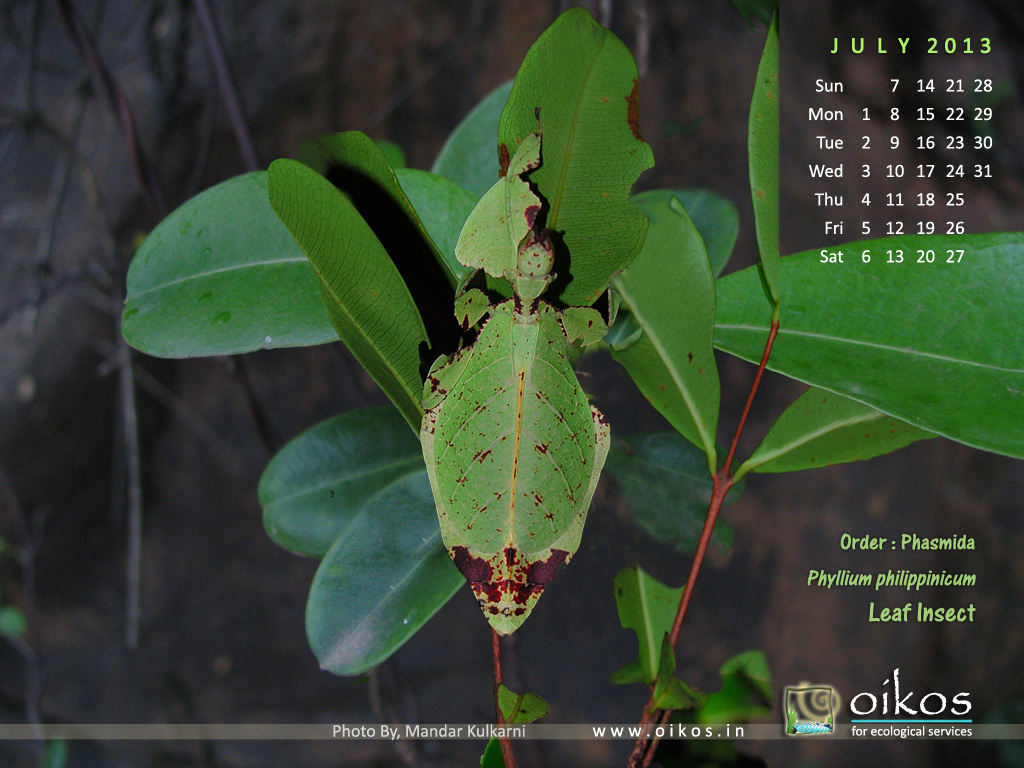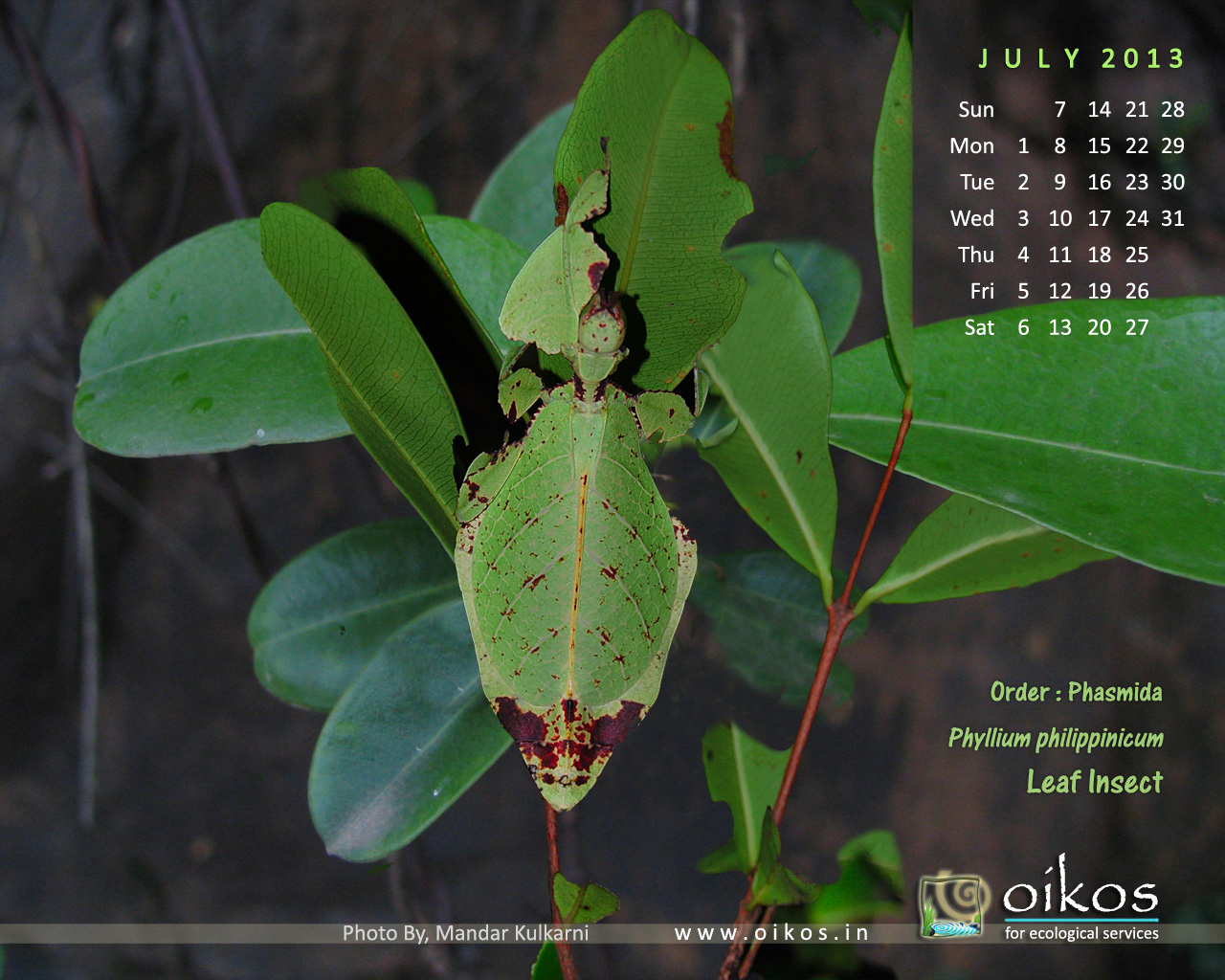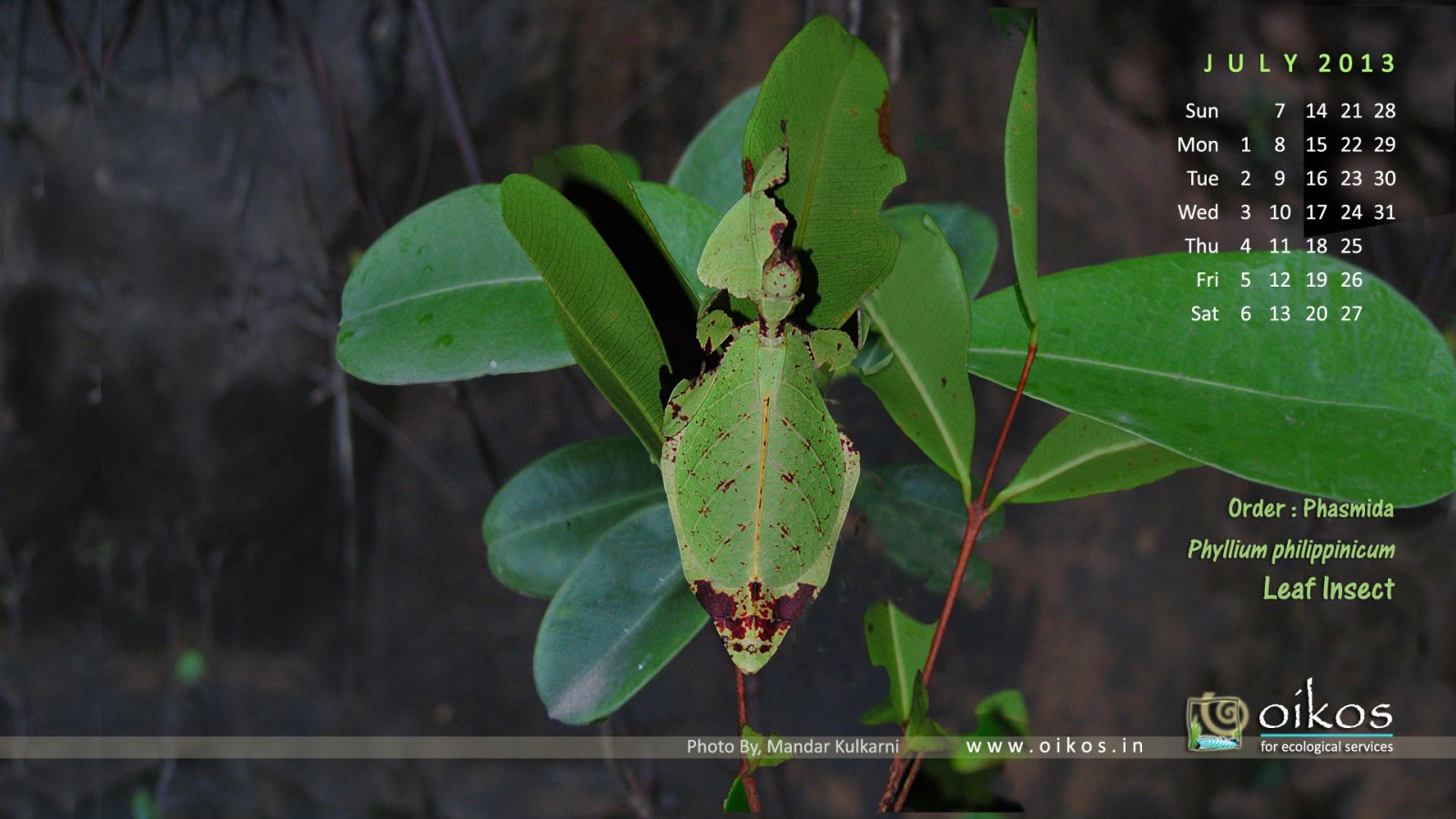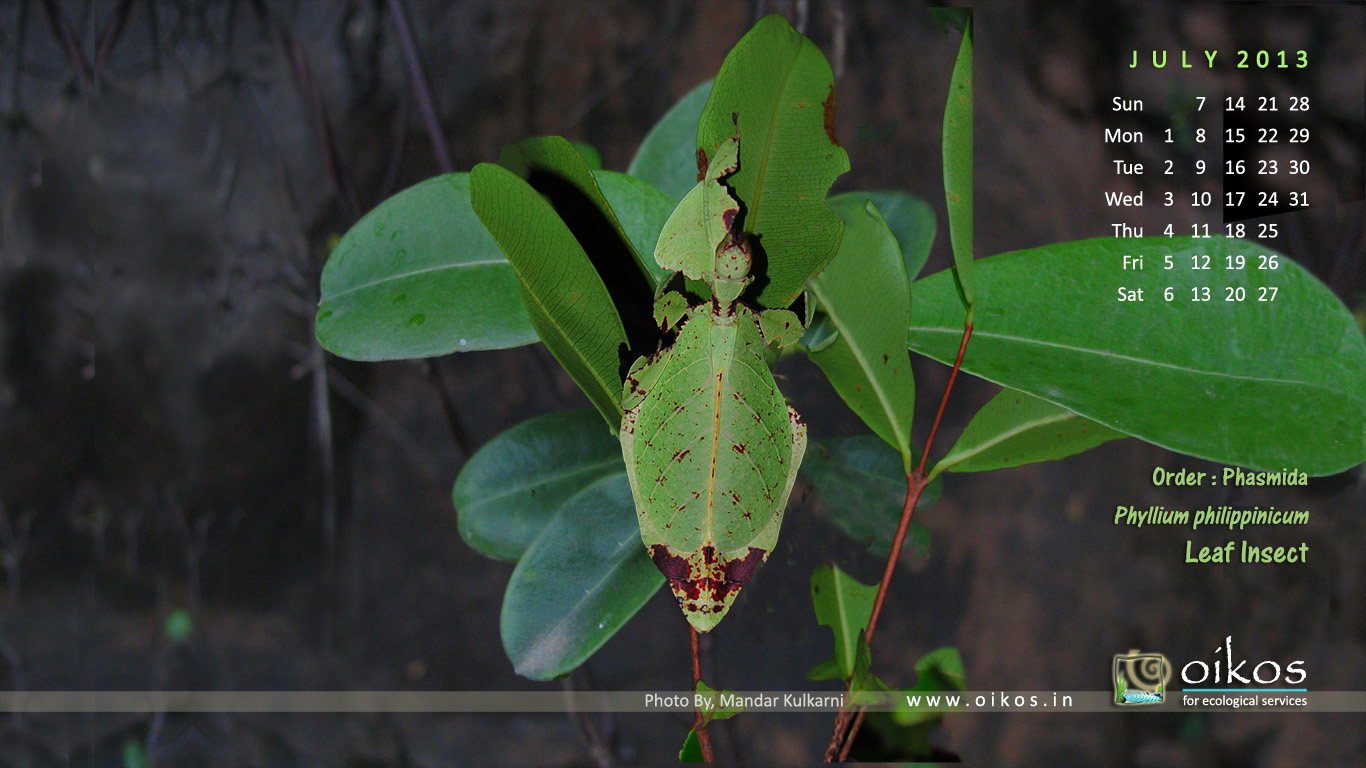Jul - 2013
| July - 2013 | |
|
Dear Nature Lovers,
Greetings from oikos ! Insects have great diversity in morphology. Few insects camouflage so perfectly in the habitat that one can’t even spot them. They are known as Leaf insect & Stick insect due to their appearance like leaves or sticks.
|
|
| Regards, Ketaki & Manasi. |
|
|
LEAF INSECT & STICK INSECT
ORDER : PHASMIDA The order Phasmida includes stick insect & leaf insects. The main difference in these two is its camouflage to appear like either stick or leaf. Both these insects come under family Phylliidae. Exquisitely camouflaged, many species look like twigs and may have the appearance of being covered by lichens, mold, bird feces, or moss. The leaf-like forms usually bear a striking resemblance to foliage, exhibiting leaf veins, mildew spots and even apparent insect feeding damage. They move extremely slowly on their food plants so rarely seen by predators. Wings: Mostly wingless. Mouth Parts: Chewing. Metamorphosis: Incomplete. Egg – Nymph – Adult. Significance to Humans: They can be destructive to some tree species. |
|
|
Leaf Insect (Phyllium philippinicum)
Size varies from 5 cm to 10 cm. As seen in the photograph, they perfectly camouflage with leaves of their food plant. They do this so accurately that predators often are not able to distinguish them from real leaves. In some species the edge of the leaf insect's body even has the appearance dried leaf corners. To further confuse predators, when the leaf insect walks, it rocks back and forth, to mimic a real leaf being blown by the wind. Their primary means of avoiding predators is crypsis. If discovered, they either play dead (catalepsy), or they try to scare the predator with a startle display which can include wing flashing, leg kicking, or spastic motion. Some species also release an irritating "tear gas-like" spray when disturbed (see Eisner et al. 1997). In addition, many phasmids can purposely lose some of their legs to help free them from a predator's grasp. If this occurs during the immature stages, they can regenerate the lost limbs during successive molts. Reference : Field guide :"Insects of BNHS reserve" by BNHS, Mumbai, Indian Insects and Arachnids by
Meenakshi Venkataraman. Photograph by : Mandar Kulkarni. |
Click on any of the desired options below to get appropriate image.
Save it to computer and set it as desktop background for your computer monitor.
Oikos for ecological services
Ph. 020-25451875
Web: www.oikos.in





